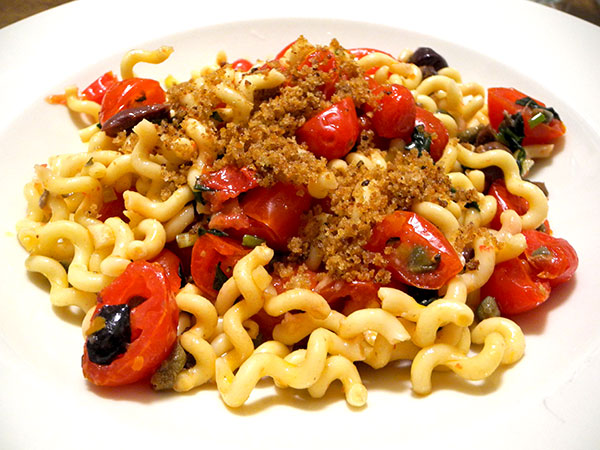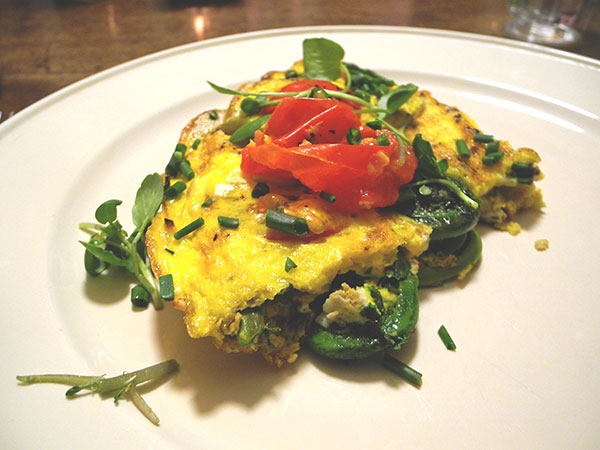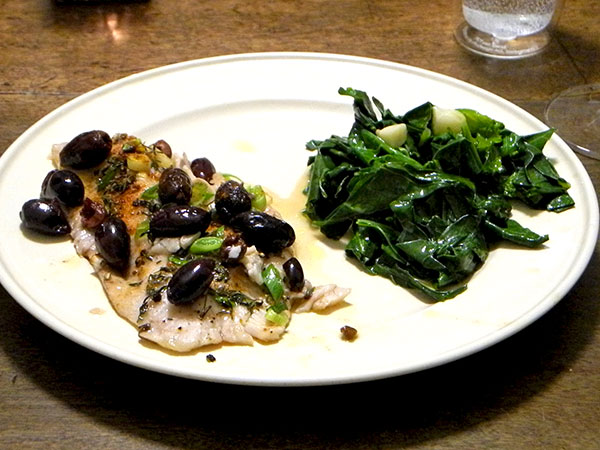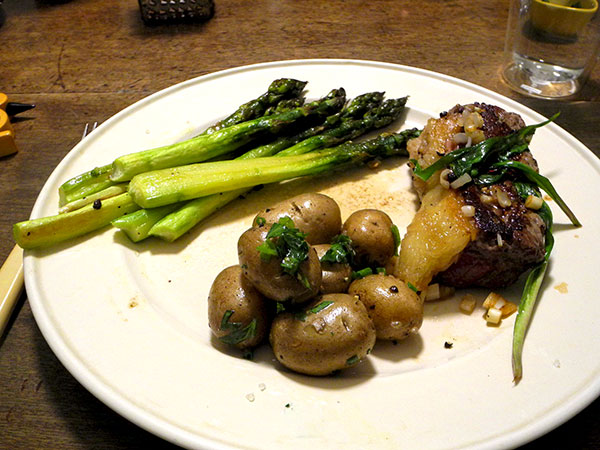This was a slightly different version of a favorite recipe. I had already bought a tuna steak at the Greenmarket and was about to head home when I spotted what turned out to be the last young fennel bulb on a table at Bodhitree Farm. I usually ‘pave’ tuna steaks with crushed fennel seed and dried chiles, and I thought that this time I might find a way to serve it with fennel two ways.
I hadn’t really brought home enough fiddleheads, and I wanted to use them as soon as possible, so most of the fresh fennel material went toward filling out the portion of green vegetable on the plate.
After we had sat down and begun the meal I decided that the basic tuna recipe doesn’t really need any gilding, but the combination of young fennel bulb, fiddleheads, and spring garlic was pretty good, and subtly complex.
- a 12-ounce section of tuna loin from Blue Moon Fish Company, cut into two pieces, rubbed on both sides with a mixture of fennel seed and dried peperoncini, ground together, seasoned with salt, and pepper, then pan-grilled for only a minute or so on each side, finished with a good squeeze of lemon, a drizzle of olive oil, and a sprinkling of fresh fennel fronds, chopped
- a few fiddleheads from Tamarack Hollow Farm, one thinly-sliced spring fennel bulb, and one spring garlic from Keith’s Farm, sliced lengthwise into two halves, all three vegetables pan-grilled for a few minutes, then combined with sliced stems from the fennel bulb and some chopped green parts from the garlic, after they had been lightly cooked with olive oil in a separate pan, the mix then seasoned and tossed with more olive oil
- small ripe grape tomatoes from Kernan Farms, halved and then briefly heated in oil, seasoned, and finished with some torn leaves of fresh New York rooftop basil from Gotham Greens
- the wine was a Spanish white, Abadía de San Campio Albariño Rías Baixas 2013
- the music was Handel Concerti Grossi, played by Tafelmusik












